Rebuilding the periods AD 814-1974, AD 401-1974 and 340 BC - AD 336
|
 |
|
Now that we have all the Hollstein curves converted to a ring width collection file, we can start analyzing it.
|
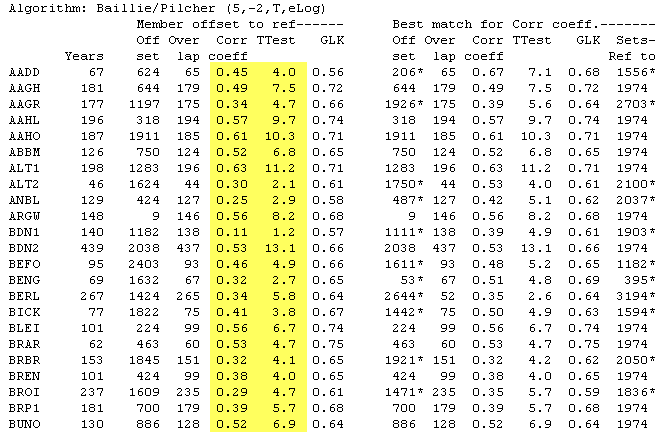 |
|
If we run a Test towards rest of collection command on this collection we will get a table as above showing quite different matching qualities...
By selecting carefully from this collection, we can build new collections with better crossdating quality!
Rebuilding (synchronizing) an unsynchronized or partly unsynchronized collection is a process
which is strongly supported by tools within CDendro. Especially the button
"Add best member to target collection" is a great help.
This process of building a new collection
by successively adding another new curve to a target collection is described in the CDendro lesson Using CDendro: Synchronizing a collection
(If you use the link to look at the lesson, please use the back-button within your browser to come back to this point!)
|
|
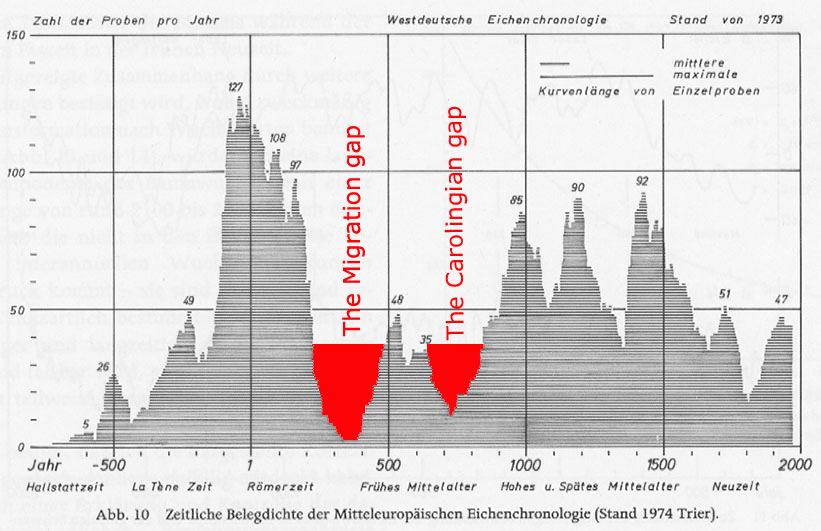 |
|
Before we present the collections built out of the Hollstein data we will look at a picture based on a diagram
from Hollstein's book. Hollstein's diagram shows the number of stems behind the ring width data for each year. There is a
severe shortage of ring width data within the "Migration gap" centred around AD 350. Though also the "Carolingian gap"
(or "Merovingian gap") centred around AD 750 is problematic. Actually the amount of well-matching available data within that gap
is exaggerated in the diagram.
|
|
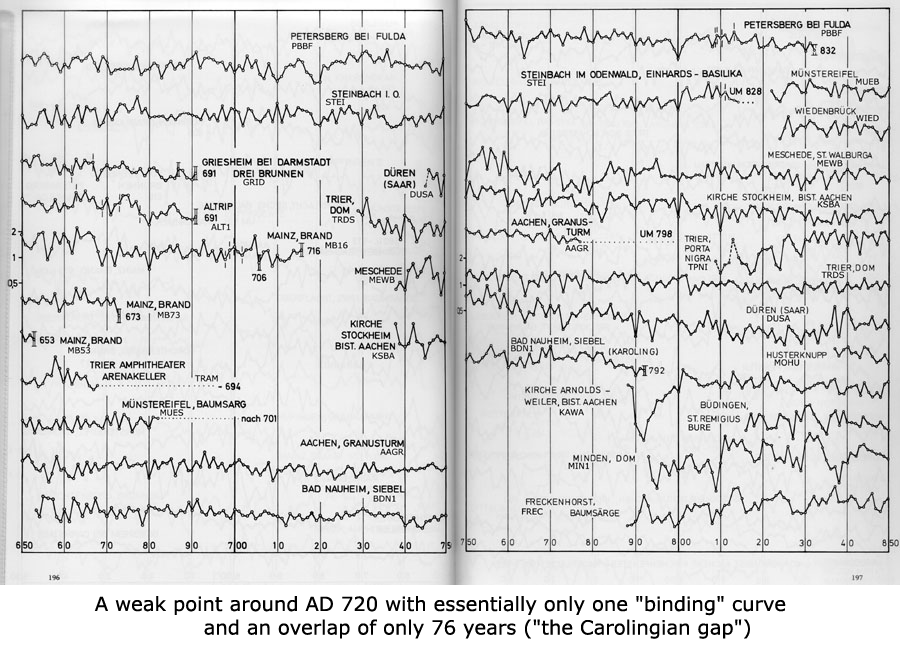
The Carolingian (Merovingian) gap
Note: The matching between the Steinbach curve and the Petersberg bei Fulda curve is problematic. A 44 years long segment of the match has a correlation
coefficient of not more than 0.11 which might possibly indicate an error.
|
|
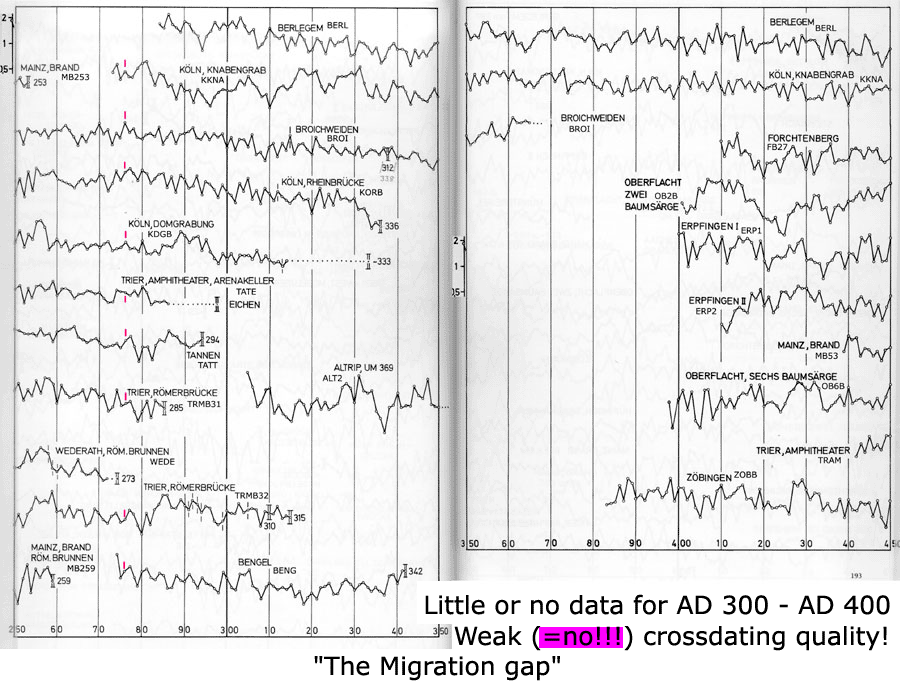
Note:
The gap is bridged by two curves: BERL and KKNA. The bridging is not convincing when analyzed in detail!
|
|
|
Three reasonably well-synchronized collections built out of the HollsteinWID.rwl collection:
We have built three collections out of the HollsteinWID.rwl collection. The links with data below is given for your research purposes.
- HollsteinBestLateToYear814.rwl
This collection covers the time AD 814-1974. The members seem to crossdate very well.
- HollsteinBestLateToYear401.rwl This collection is based on the above, but
a number of members from the HollsteinWID.rwl file have been added to make the collection cover the time AD 401-1974.
On somewhat weak grounds it spans the Carolingian gap. This collection is not of the same quality as that above.
Note: Two extra zero rings have been inserted into the TRAM (Trier Amphietheater Arena Keller) curve at AD 610. The curve
is then renamed to TRAMZZ. Apparently, Hollstein missed two rings at this point. An alternative might be to remove the youngest 50 rings widths from the curve.
Note: A previous version of the HollsteinBestLateToYear401.rwl file ended at AD 410: HollsteinBestLateToYear410.rwl
- HollsteinBestRoman.rwl Rebuilding of the Roman time data is best done separatly from later time data, i.e. the curve will "float".
With the dating used by Hollstein, the curve covers the time 340 BC - AD 336.
|
|
The "Middle" collection AD 401-716
|
In the next section we will demonstrate a peculiar property within Hollstein data. For this we need
a properly selected and well-crossdating collection covering the time AD 401-716.
|
|
 |
This collection contains most of the oldest members of the HollsteinBestLateToYear401 collection.
For your experiments, here is a copy: Middle.rwl
|
|
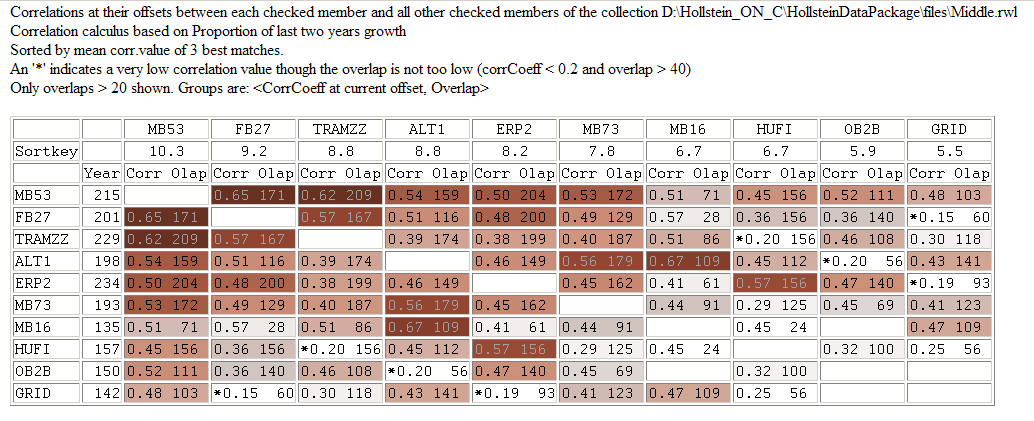 A matrix showing how each member of the Middle collection matches to all the other members.
A matrix showing how each member of the Middle collection matches to all the other members.
|
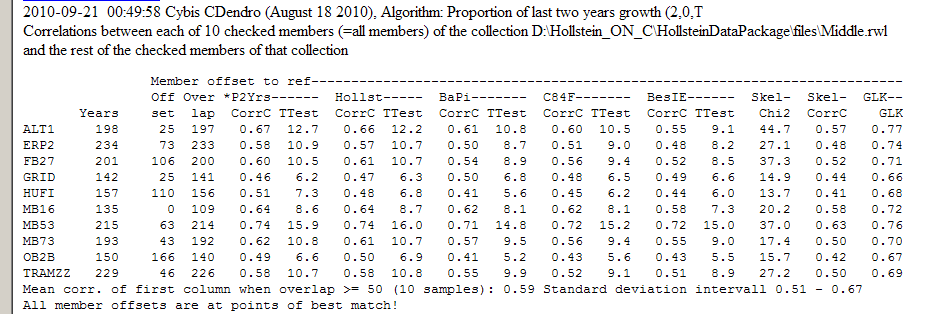 The table shows how each of the members matches towards the rest of the collection.
The table shows how each of the members matches towards the rest of the collection.
|
|
In all, the Middle collection seems to contain properly crossdating members!
|
In the next section we will see how the Middle collection matches properly to an established and probably well known reference chronology.
We will also see how it surprisingly matches ambiguously towards the rest of the Hollstein data.
Continue with the next section!
|
|
|
Lars-Åke Larsson & Petra Ossowski Larsson 21 Sept 2010. (This and the next sections are based on a lecture hold at a round-table meeting in Bibracte,
Centre archéologique européen, France in May 2010, initialized by Georges Lambert.)
|
|







